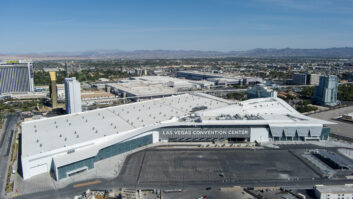
Fig. 1: A simple solution for an annoying problem.
SBE Educator of the Year Buc Fitch, P.E., writes that chiggers are a big problem in New York State. These almost invisible pests crawl up your legs, bite and leave infuriating, itching red welts.
Buc has run into these guys at least a dozen times while doing field work over the last 20 years. The worst of their damage leaves marks on the skin. Most people who work outdoors in the Northeast have had chiggers at least once.
Chiggers are not insects but the juvenile, larval form of a family of mites, according to the Missouri Department of Conservation (which has a nice essay about chiggers, chigger prevention and popular chigger myths on its website). Insects or not, you don’t want them on your ankles and legs.
This year Buc has worn hiking socks from L.L. Bean under his steel-tipped waterproof Timberline boots. Not only has he experienced no chigger bites, he has avoided any insect bites on his legs.
The hiking socks are impregnated with an insect repellant that obviously is effective, based on Buc’s experience. Search hiking socks with insect repellant at www.llbean.com. Since these socks fall into the category of protective clothing used for work, there is an additional benefit: the cost is tax deductible.
Reach Buc Fitch at [email protected]. Drop him a line congratulating him on his being awarded SBE Educator of the Year … and chigger-free!
* * *
Like many other readers, Ron Kumetz, director of engineering for Broadcast Devices Inc., enjoyed John Huntley’s simple but effective discussion of grounding and driving ground rods in the Aug. 11 issue of Radio World.
Ron has found that the most effective way to drive ground rods is with a ground rod adapter on a rotary hammer drill. The adapters usually are about $100; the hammer drills can be rented for a reasonable price if your budget can’t support buying one. Home Depot usually rents equipment made by Hilti, one manufacturer of hammer drills.
A hammer drill and one of these adapters will drive a ground rod in a few minutes with minimal physical effort on the part of the operator. The high-speed hammering action tends to break shale and other types of rock susceptible to fracturing. Driver adapters are available for 5/8-, 3/4- and 1-inch rods. The adapters can be found by searching ground rod adapter at www.us.hilti.com. Ron concludes that the cost of one of these bits may be less than the cost of pain killers one will consume after a day of driving rods with a post driver or sledge. Thanks for the tip, Ron.
See what’s new from Broadcast Devices by heading to www.broadcast-devices.com.
* * *
Frank McLemore is a contract engineer; his company Communications and Electronics Inc. is located in Phenix City, Ala.
Frank maintains a variety of transmitters and wanted to share a tip for owners of the BE AM-5E transmitter, a suggestion that may help others too. He has experienced failure of the front-panel pushbutton switches. These switches are used in other manufacturers’ transmitters, too.
Frank found that the switch LEDs work fine but when the button is pushed, the familiar “click” is not heard. Rapid and repeated depressions of the pushbutton can sometimes elicit a response, so Frank just replaced them.
Curiously, after removing and replacing the switches, Frank found that once the switch was removed from the printed circuit board, it functioned fine.
The switches have six pins soldered to the board. The top two are used for the LED, and the bottom four pins are the switch contacts. Frank found that by heating the contact pins with a soldering iron, switch operation was restored.
He surmises that the heat from the soldering iron somehow eliminates the contact resistance. Whatever the effect, Frank is no longer replacing switches.

Fig. 2: A fluorescent fixture, easily mounted, illuminates a dressing table mirror — or the inside of a rack. * * *
One thing I hear often from aging engineers is the need for increased light under consoles or inside dark equipment racks. Seems sight is not what it was when we were in our 20s.
Paul Sagi, a contract engineer in Malaysia and loyal Workbench reader, sends a picture demonstrating a solution. He found corded fluorescent fixtures at a hardware store and mounted them on the sides of his wife’s dressing table mirror, as seen in Fig. 2.
The fixtures come in various lengths, so they could be mounted either along the sides or inside the top of equipment racks. The fixtures will be just as useful illuminating punch or wiring blocks underneath consoles.
John Bisset marked his 40th year in radio in broadcasting recently. He is a past recipient of the SBE’s Educator of the Year Award. Reach him at[email protected]. He can be reached at (603) 472-5282. Faxed submissions can be sent to (603) 472-4944.
Submissions for this column are encouraged and qualify for SBE recertification credit.












